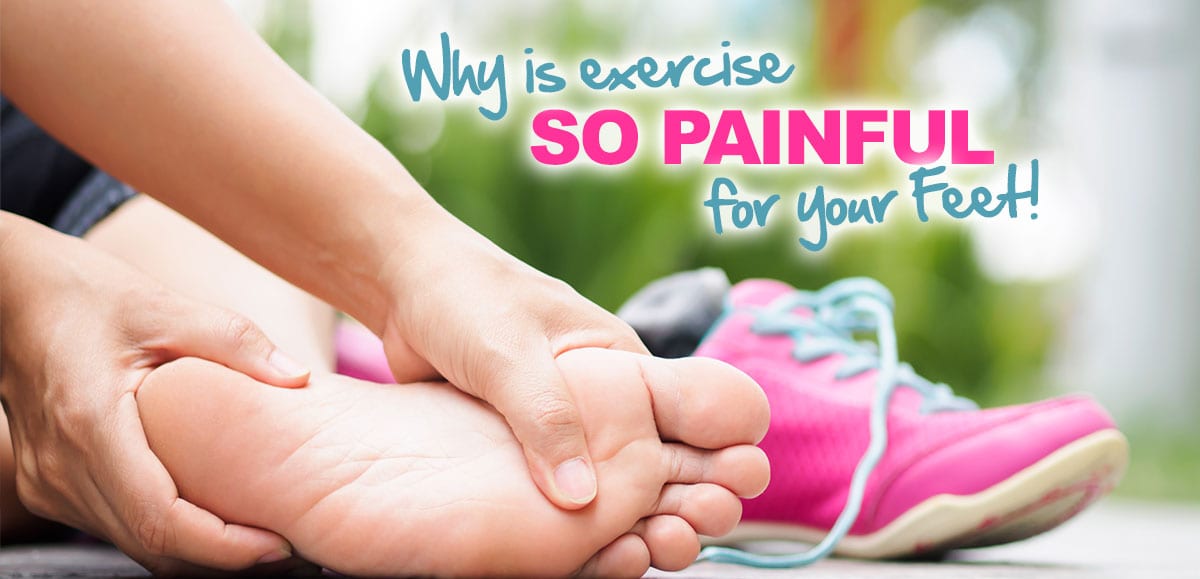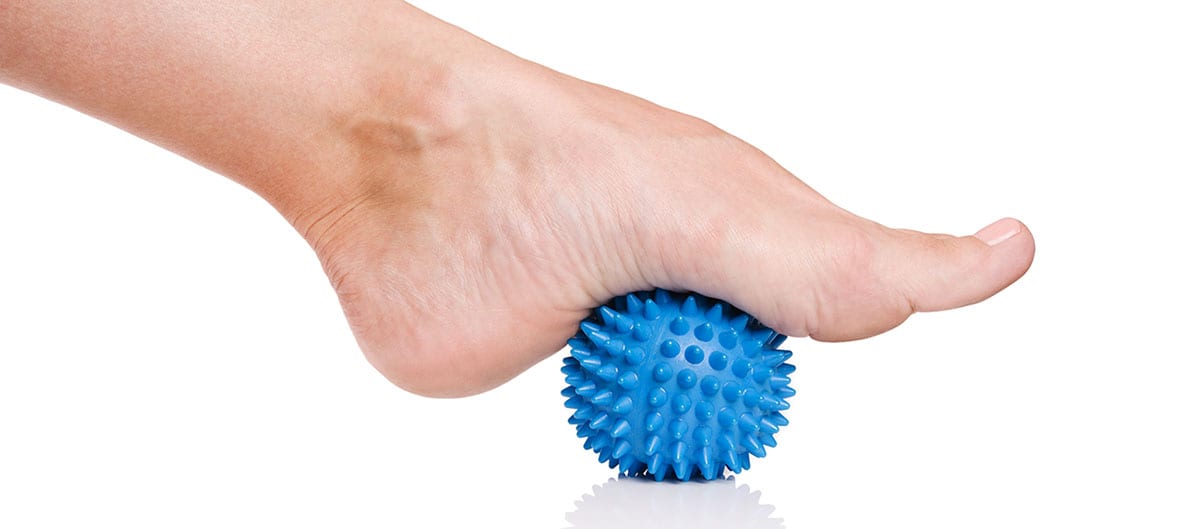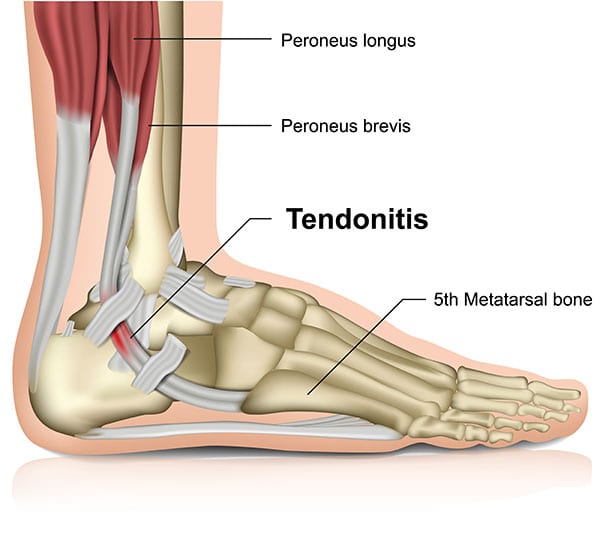
How do you get rid of the soreness after working out?
You’ve made your News Year’s resolutions, bought yourself new sneakers and have a training schedule worked out. Two weeks in and your feet are killing you! Whether it be ball of foot pain, aching arches or sore heels, foot injuries are the last thing you need when trying to keep your new workout routine on track. Find out why and what you can do to prevent it:
Why do my feet hurt when I exercise?
Most forms of exercise involve putting our feet under a larger amount of pressure than when at rest. As such the 26 bones, 33 joints and numerous tendons and foot ligaments may not work together as smoothly as they should. An inflamed tendon or a jarred joint can have a knock-on effect on the other parts of the foot which all result in the same outcome – foot pain!



What are common foot problems associated with exercise?
The most common causes include:
- Stress Fracture – these are small cracks to any of the bones in your feet (e.g. metatarsal fracture) or severe bruising within the bone. What does a stress fracture feel like? A sudden sharp pain is usually felt at the moment of fracture which does not ease within 24 hours. They can be very painful! They are usually created over a period of time when there is an increase in stress on that part of the foot. Increases in training intensity or simply the frequent repetitive motion of the same exercise can lead to stress fractures. They can be very frustrating for those trying to stay fit and can lead to a suspension of your fitness plan for around 6 weeks.
- Plantar Fasciitis – the plantar fascia tendon has been the cause of many a training plan to be interrupted. The long tendon that runs along the bottom of the foot becomes inflamed and causes a sharp pain near the heel. There are a range of reasons as to why you may suffer with this – collapsed arch (flat feet), poor training shoes, increase in intensity or frequency of exercise being just a few.
- Sesamoiditis –The sesamoids are smaller bones that lie beneath the large first metatarsal bone and absorb a large amount of force and pressure when doing intensive aerobic activity. The sesamoids can become inflamed or even fractured and need support and rest to recover.
- Extensor Tendonitis – these are tendons which are on top of the foot just under the skin. Their purpose is to enable the foot to flex and as such raise the toes, and as with all tendons they can become aggravated and inflamed. How do I know if I have extensor tendonitis? Sharp pain, stiffness and a decreased range of motion when flexing your foot are all signals you could have this issue. These are sometimes accompanied by cracking noises.
How do you Treat Sore Feet?
Luckily there are some key steps you can take to prevent these common causes of foot pain:
- Take it steady – if you haven’t exercised for a while, don’t try and run a marathon straight away. They key to a good training plan is planning – build up to your end goal. Small steps will win in the end.
- Footwear – invest in good footwear as it is your feet that will be working harder than any other part of your body. If your sneakers are over a year old then check that the supportive structure is still effective. If buying new then pay that little bit more and your feet will thank you!
- Stand on softer ground. The ground surface you stand on can make a huge difference to stress put on your foot. If there is a carpet, rug or even grass then head for it, your feet and legs will thank you!
- Cushion – give those pain points the extra cushioning they deserve. Metatarsal pads can be added to sneakers to give your ball of foot, metatarsal and sesamoid bones that extra bit of impact cushioning. Some metatarsal pads also have a small ridge running horizontally across them which is designed to stop your foot slipping forward in your shoe – great if you want to keep your toe nails after a long run! If you are prone to plantar fasciitis or suffer pain in the arch of your foot due to collapsed arches (or flat feet), then slip in an arch support to prevent pain in these areas. Arch supports can also help distribute your weight more evenly across your foot preventing some forms of leg and hip pain.
- Stretch – just like any other part of your body, your feet need to be prepared for exercise. Don’t forget to include them in your warm up and cool down exercises. Stretch your feet for at least 3 minutes before and after exercise.
- Ice – after exercise, if you do experience any type of foot pain then ice to reduce the inflammation and rest. A short period of rest is usually better in the long term than pushing through the pain and making the injury worse.
- Elevate - When you get home, elevate your feet on a cushion. This helps the blood return to the heart and reduces swelling.
- Moisturize – to prevent calloused skin which itself can cause pain points, moisturize your feet daily to keep them supple. Do this at night when you no longer need your footwear as it will cause your feet to slip in your shoes.
- Massage - Aching feet can feel instantly refreshed with a good massage. Try rolling a tennis ball under the arch of the foot for effective, instant relief.
- Strengthening exercises – there are some simple exercises you can do that will improve the condition of your feet, increasing their endurance in exercise. These include arch stretches, toe stretches, and resistance band foot pulls.
Following these simple steps will ensure that your feet are prepared for the exercise you plan. Happy feet lead to a happier (and fitter) you!















